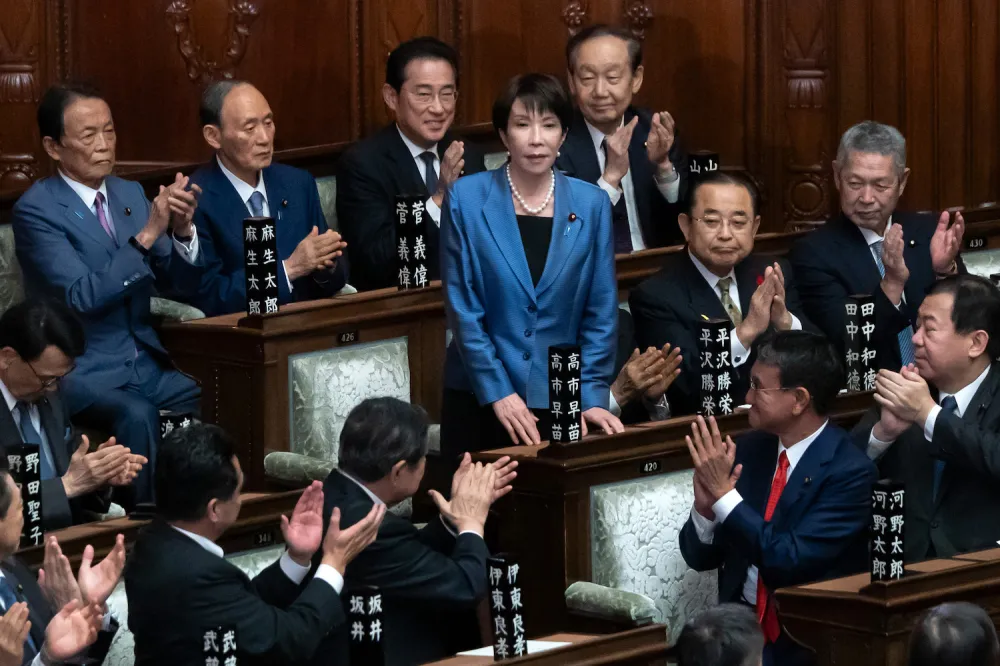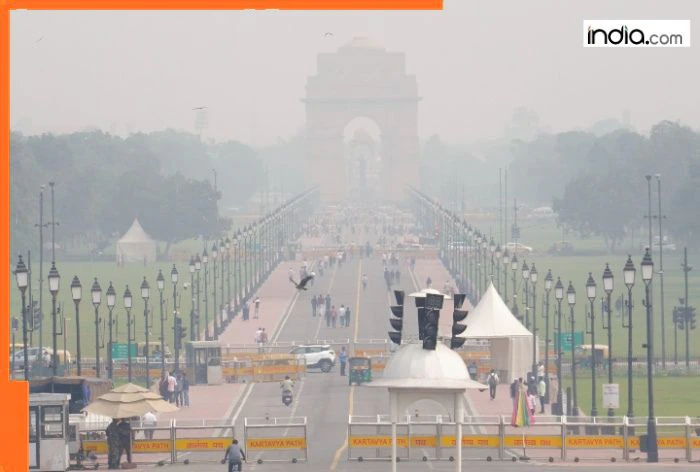Copyright Foreign Policy

Welcome back to World Brief, where we’re looking at Japan’s first female prime minister, U.S. efforts to bolster the Israel-Hamas cease-fire deal, and new proposals to end the Russia-Ukraine war. Tokyo’s New Leader Japan’s parliament elected ultraconservative lawmaker Sanae Takaichi as the nation’s first female prime minister on Tuesday. Her election marks the end of a three-month political vacuum left by the ruling Liberal Democratic Party’s (LDP) disastrous July election, and it comes amid a recent populist wave in Japan akin to growing far-right movements in the United States and Europe. Until 24 hours ago, Takaichi’s election appeared in doubt. Earlier this month, the LDP lost its junior coalition partner, Komeito, after it refused to back Takaichi’s candidacy. Komeito disliked the LDP’s lax response to the party’s political funding scandal, which emerged in 2023, and condemned Takaichi’s anti-immigrant rhetoric as well as her repeated visits to the controversial Yasukuni Shrine, which honors Japan’s war dead, including convicted World War II war criminals. Without its 26-year partnership with Komeito, the LDP did not have the votes to have Takaichi replace former Prime Minister Shigeru Ishiba, who had only been in office for a year. But on Monday, the LDP managed to clinch a new coalition deal with the populist Japan Innovation Party, which supports Takaichi’s hawkish and nationalistic views. With that support, Takaichi won 237 votes—four more than a majority—in Japan’s lower house compared to the 149 seats won by Yoshihiko Noda, the head of the opposition Constitutional Democratic Party of Japan. Takaichi also won a second vote in the upper house by 125-46 after falling just shy of a majority in the first round. Still, Takaichi’s new coalition lacks enough seats to hold a majority. This means that she will have to work with the very opposition parties that voted against her to pass any legislation, even as she takes the LDP in a more conservative direction. On her agenda, Takaichi is hoping to tackle rising prices by implementing neo-Abenomics, as she was the protégé of former Prime Minister Shinzo Abe. She maintains a hawkish stance toward China and South Korea and has advocated for a significant increase to the country’s defense spending. Although she has expressed concern over Japan’s reliance on the United States, Takaichi has pledged to work closely with U.S. President Donald Trump; the two are scheduled to meet in Tokyo early next week. Despite being the country’s first female leader, Takaichi is not a champion of gender equality. She opposes same-sex marriage, supports the imperial family’s male-only succession line, and resists efforts to make it easier for married Japanese women to keep their maiden names. Despite pledging to drastically increase the number of women in Japan’s cabinet, Takaichi only appointed two women as ministers: Finance Minister Satsuki Katayama and Economic Security Minister Kimi Onoda. “Her social conservatism is part of the reason that while Takaichi’s election represents something of a watershed moment in a male-dominated society, it has not brought much cheer from those advocating greater diversity,” Tokyo-based journalist William Sposato argued in Foreign Policy. Japan is ranked 118th out of 148 countries in the World Economic Forum’s 2025 Global Gender Gap Report. Today’s Most Read Europe Is At War by Michael Kimmage Can India Continue to Rise Without Its Region? by Chietigj Bajpaee U.S. Intelligence Is Being Blinded by Trumpian Politics by Joshua Busby, Erin Sikorsky, and Greg Pollock What We’re Following Bolstering a fragile truce. U.S. Vice President J.D. Vance traveled to Israel on Tuesday to shore up support for the U.S.-brokered Israel-Hamas cease-fire deal. The truce faced its first major test on Sunday, when Israel accused Hamas of launching an anti-tank missile and killing two Israeli soldiers in southern Gaza. Alongside Vance, White House special envoy Steve Witkoff and Trump’s son-in-law Jared Kushner will take part in the talks until Thursday with Israeli Prime Minister Benjamin Netanyahu and other officials. The head of Egypt’s intelligence agency, Maj. Gen. Hassan Rashad, is also in the country to meet with Netanyahu as well as other senior Israeli and U.S. officials. In a press conference in Israel on Tuesday, Vance tried to project optimism, saying the cease-fire was going “better than I expected.” However, some Trump administration officials reportedly fear that Netanyahu is considering reneging on the deal. Vance is expected to encourage Netanyahu to uphold the truce now that all living hostages have been freed from Gaza, as well as to push Israel to work toward a lasting peace with Palestinian authorities in the region. Although Hamas has reiterated that it is committed to ensuring that the conflict “ends once and for all,” Israel has warned that it will “respond forcefully to any violation of the agreement.” Such reasoning was used as justification for Israel’s retaliatory attack on Monday, which killed at least 45 Palestinians, according to Gaza health officials. New peace talk proposal. European leaders, including Ukrainian President Volodymyr Zelensky, issued a joint statement on Tuesday expressing support for Trump’s call for an immediate cease-fire in the Russia-Ukraine war. The statement proposes that current battle lines be the starting point for future negotiations and that Kyiv’s allies continue to apply pressure on the Russian economy, including by using frozen Russian assets to assist Ukraine’s war efforts. This plan is part of a 12-point proposal to end the war that European countries are working on with Ukraine. Although the proposal’s details are still being discussed and could change, the current plan would have Trump chair a peace board that would oversee the deal’s implementation. Once Russia commits to halting its offensive, both sides would exchange prisoners of war, and all Ukrainian children would be returned to their home country. Kyiv would receive security guarantees to prevent future Russian aggression, and it would begin the process of joining the European Union. Meanwhile, sanctions would gradually be lifted on Russia so long as Moscow agrees to help fund Ukraine’s reconstruction. Future peace talks were the subject of a high-level meeting this week between U.S. Secretary of State Marco Rubio and Russian Foreign Minister Sergey Lavrov. The two leaders were supposed to meet in Budapest, Hungary, last Thursday to discuss next steps to schedule a summit between Trump and Russian President Vladimir Putin. However, that in-person meeting was tabled, and a replacement phone call between the two officials on Monday left diplomats saying that plans for a Trump-Putin sit-down appear premature. Drones over Khartoum. A series of drone attacks hit the Sudanese capital of Khartoum early Tuesday, including near Khartoum International Airport. The assault came just one day before the airport was set to reopen after being closed for more than two years. Details on potential casualties and damages from the attack are still unclear, and no group has claimed responsibility thus far. Sudan’s military and the paramilitary Rapid Support Forces (RSF) have been fighting a civil war since April 2023, largely centered on control of Khartoum. When fighting first broke out, the RSF seized Khartoum International Airport as part of its initial assault, and it held on to the facility until this March, when the Sudanese army recaptured the airport as part of a major ground offensive in the capital. Tuesday’s explosions were the third wave of drone attacks on Khartoum in the past seven days, with last week’s attacks hitting two army bases. Government authorities are hoping that a massive reconstruction campaign will encourage citizens to move back to Khartoum; since the army’s March offensive, more than 800,000 people have returned to the capital. However, much of the city remains under rubble, and RSF drone activity continues to cause regular blackouts that affect millions. Odds and Ends



